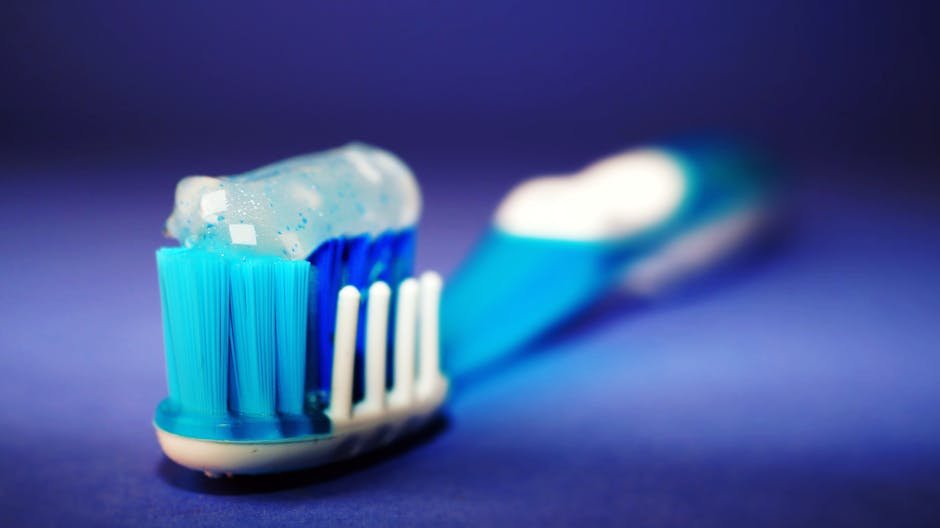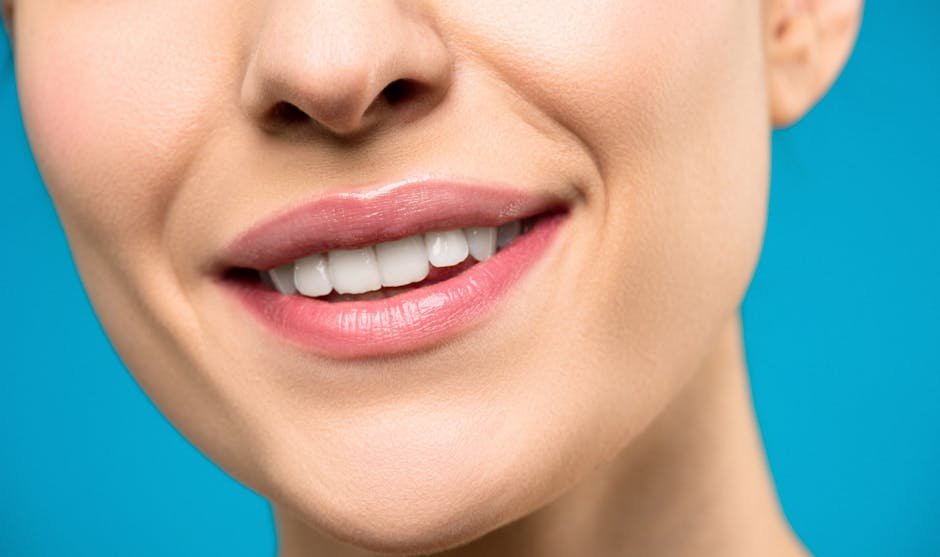Oral health It’s more than just brushing your teeth, you know? Our mouths play a crucial role in our overall health and well-being, but they often don’t get the attention they deserve. I’m going to share some tips and practices that can transform your routine and help you achieve a healthy smile. Let’s find out together!
Summary
Why Oral Health is Critical to Overall Well-Being
THE oral health plays a crucial role in overall well-being, affecting not only the mouth but the entire body. Maintaining good oral hygiene helps prevent problems such as cavities and gum disease, which can lead to more serious complications, including infections and systemic disorders.
Additionally, oral health is essential for good digestion. Proper chewing begins in the mouth, allowing food to be processed properly. Dental problems often result in digestive difficulties, which can compromise nutrient absorption.
Studies have shown a link between oral diseases and conditions such as heart disease, diabetes and pregnancy complications. Regular oral care, such as brushing and flossing, can reduce these risks, making it a vital part of a healthy lifestyle.
Interconnection with Mental Health
Good oral health also impacts the mental health and self-esteem. A healthy, bright smile can boost confidence and improve social interactions, while problems such as bad breath or damaged teeth can lead to social isolation.
Therefore, adopting active oral hygiene practices and regularly visiting the dentist are essential steps to ensure not only a beautiful smile, but a healthy and balanced body.
Most common oral problems and their symptoms

Identify early most common oral problems is essential for maintaining proper oral health. Among the most common are cavities, which often manifest as toothache, sensitivity to hot and cold foods or drinks, and small holes in the teeth.
Already the gingivitis is an inflammation of the gums that can develop into periodontitis if not treated properly. Symptoms include redness, swelling, and bleeding of the gums when brushing or flossing. It is important to act quickly to avoid complications.
Symptoms of Oral Problems
Bad breath, known as halitosis, can be a sign of underlying oral problems such as gingivitis, cavities, or plaque. It is important to identify the root cause and seek appropriate treatment.
THE tooth sensitivity is another common problem, characterized by sharp pain when consuming hot, cold or sweet foods or drinks. It can occur due to enamel wear or gum recession and can be relieved with specific toothpastes and professional care.
Analyze signals such as darkened teeth or visible stains on the teeth is essential, as they may indicate acid erosion or plaque buildup. Maintaining regular dental visits helps treat these symptoms before they become more serious problems.
Constant bad breath and what could be behind the problem
THE bad breath, also called halitosis, is a common problem that can affect the self-esteem and the social interactions. It is usually caused by accumulation of bacteria in the mouth, especially in language, gums and between the teeth, which produce unpleasant-smelling sulfur compounds.
To the most common causes include poor oral hygiene, gingivitis, cavities, dry mouth and even prolonged fasts. In some cases, bad breath may be related to digestive problems or use of certain medications, but most of the time, the origin is actually in the mouth.
To combat halitosis, it is essential to maintain a strict oral hygiene routine, which includes tongue brushing, flossing and brushing after meals. Drink plenty water, avoid strong smelling foods (as garlic and onion) and visit the dentist regularly are also effective measures.
If the problem persists even with good care, it is worth seeking professional evaluation to investigate less obvious causes, as infections, reflux or hormonal changes.
Sensitive teeth and what to do to relieve the discomfort
THE tooth sensitivity is a common discomfort that can arise when consuming food or drinks cold, hot, candy or acids. This sudden pain occurs when the dentin (inner layer of the tooth) is exposed, either due to enamel wear, gum recession or cavities.
Among the main causes are the excessive use of abrasive toothpastes, brushing with excessive force, bruxism, and even recent dental procedures. Problems such as gingivitis and periodontitis can also contribute, as they affect the gums and expose the tooth root.
To alleviate sensitivity, it is important to use a soft bristle brush and choose to specific toothpastes for sensitive teeth. Avoiding very acidic foods and maintaining good oral hygiene also makes a difference. In persistent cases, it is best to consult a dentist. dentist, who can apply desensitizing products or indicate more specific treatments.
Daily care for teeth and gums that makes a difference
You daily care of teeth and gums are essential for maintaining oral health and preventing disease. Brushing your teeth at least twice a day with fluoridated toothpaste helps remove plaque that can cause cavities and gum problems.
The use of dental floss Brushing your teeth daily is essential for reaching areas that a toothbrush can’t reach, removing food debris and preventing plaque buildup between your teeth and under your gums. Avoiding skipping this step can make a big difference to your gum health.
Importance of Diet in Oral Health
Maintaining a balanced diet is also crucial for healthy teeth. Excessive consumption of sugars and acidic foods can wear down tooth enamel and increase the risk of cavities. Choosing fruits, vegetables, and dairy products strengthens teeth and promotes gum health.
Visit the dentist regularly Regular cleanings and check-ups allow early problems to be identified and treated before they become serious. Keeping appointments is a preventative measure that ensures a healthy smile and avoids future complications.
Gingivitis: causes, symptoms and how to treat it naturally

THE gingivitis It is an inflammation of the gums that can progress to more serious problems if left untreated. Its main causes include the accumulation of bacterial plaque due to poor oral hygiene. Other causes include smoking, diabetes, and certain medications that affect gum health.
Typical symptoms of gingivitis include red, swollen gums and bleeding when brushing or flossing. It’s important not to ignore these signs, as gingivitis is the first stage of periodontal disease, which can lead to tooth loss if left untreated.
Natural Treatments for Gingivitis
Treating gingivitis naturally can be an affordable option for many. A rigorous oral hygiene routine, with proper brushing and flossing, is essential. Incorporating a natural mouthwash made from warm water with salt can help reduce inflammation and kill bacteria.
The consumption of foods rich in vitamin C, such as oranges and kiwis, strengthen the immune system and promote gum health. In addition, the use of essential oils such as clove and tea tree oil have antibacterial properties that can help treat gingivitis.
Periodontitis and gingivitis: what is the difference and how to prevent the disease from progressing
Periodontitis is a more serious form of gum inflammation that affects not only the gums but also the supporting tissues of the teeth, including the ligaments and bones. It usually occurs when gingivitis is not treated properly, allowing the inflammation to progress and compromise deeper structures.
Unlike gingivitis, which is reversible with good hygiene, periodontitis can cause permanent damage, such as gum recession, tooth mobility and even tooth loss. One of the most common signs is persistent bad breath, in addition to bleeding, pain when chewing and a feeling of “loose” teeth.
Preventing periodontitis begins with proper brushing, daily flossing, and regular visits to the dentist. In more advanced cases, professional treatment with scaling and specialized monitoring may be necessary. Avoid tobacco, control your stress and maintaining a healthy diet are also measures that significantly reduce the risk of developing the disease.
Wisdom tooth: function, when to extract and how to care for it after surgery
THE wisdom tooth, or third molar, is the last tooth to erupt, usually between the ages of 17 and 25. Although they were useful to our ancestors, today, many of us do not have enough space in our mouths to accommodate them without problems.
Wisdom tooth extraction is indicated when the tooth is impacted, causing pain or potential for misalignment of other teeth. It is also considered when there is a risk of infection or cavities, due to the difficulty in properly cleaning the wisdom tooth.
Post-Surgical Care
After the extraction, care is crucial for a healthy recovery. It is important to apply ice packs for the first 24 hours to reduce swelling. Keeping your head elevated when lying down helps minimize bleeding.
Avoid hard or hot foods and opt for a liquid or soft diet for the first few days. Take care of your oral hygiene, avoiding the surgical area when brushing.
It is recommended to follow all the dentist's instructions and contact him/her if there is severe pain or signs of infection.
How to brush and floss your teeth correctly

Carry out the correct brushing is essential for maintaining oral health. Start by using a soft toothbrush and fluoride toothpaste. Position the brush at a 45-degree angle to the gums and gently brush back and forth. Spend time on all surfaces of the teeth: front, back, and chewing surfaces.
Brush your tongue to remove bacteria and freshen your breath. It is important to replace your toothbrush every three months or when the bristles become worn.
Correct Use of Dental Floss
THE flossing Removes food particles and plaque from between teeth where a toothbrush can't reach. Use about 18 inches of floss, wrapping most of it around each middle finger, leaving a few inches to work with.
Gently slide the floss between your teeth, making a 'C' shape around each tooth. Move the floss up and down, reaching below the gum line. Use a clean section of floss for each tooth to avoid redistributing plaque.
Practicing these techniques regularly helps prevent cavities and gum disease, keeping your smile healthy.
Tartar buildup on teeth and how to avoid this problem
THE Tartarus, also known as dental calculus, is the hardening of the bacterial plaque that was not removed properly during brushing. When accumulated, it forms a yellowish or grayish layer on the teeth and gums, favoring the appearance of cavities, gingivitis and bad breath.
Unlike plaque, tartar cannot be removed with just a toothbrush and floss. Its removal requires professional cleaning done by a dentist, with specific instruments that do not damage tooth enamel. The longer it remains in the mouth, the greater the risk of gum inflammation and gum recession.
Tartar prevention starts with a careful oral hygiene: Thorough brushing after meals, daily flossing and regular visits to the dentist. Avoiding smoking and reducing sugar intake are also measures that help keep teeth clean and free from the build-up of hardened residue.
Children's oral hygiene: guidelines and healthy habits from an early age
Establish good habits children's oral hygiene is crucial to ensuring lifelong dental health. Starting early, even before the first teeth appear, can make a big difference. Gently wipe your baby’s gums with a damp cloth after feedings to remove bacteria and pave the way for healthy teeth.
When teeth first appear, use a soft toothbrush and a small amount of fluoride toothpaste. Brushing twice a day can help prevent early tooth decay. Supervise young children while they brush to ensure proper technique and to avoid overuse of toothpaste.
Healthy Habits for Children
Teach the use of dental floss As soon as two teeth touch, it is essential to clean between the teeth, where the brush cannot reach. Make brushing fun with songs or dedicated apps, making the routine enjoyable for children.
Limiting your intake of sugary foods and sweet drinks can help prevent cavities. Encourage a diet rich in fruits, vegetables, and dairy products, which provide the nutrients needed for strong teeth.
Regular dental visits should begin around the age of one. This ensures early detection of dental problems and educates parents on the best possible care.
Mouth ulcers: where they appear and how to relieve the pain naturally
THE cold sore is a small, painful, whitish lesion that can appear in different areas of the mouth, such as the language, gums, roof of the mouth, inner part of the lips, cheeks and in some cases even in throat. Although it is not contagious, it can cause considerable discomfort when speaking, chewing or brushing your teeth.
The most common causes involve low immunity, stress, injuries with brush or appliance, hormonal changes and nutritional deficiencies — such as lack of vitamin B12, iron or folic acidAcidic or highly seasoned foods can also worsen symptoms.
To alleviate discomfort, you can use antiseptic mouthwashes, healing gels or home solutions, such as warm water with salt. Good oral hygiene without damaging the lesion speeds up healing, which usually occurs within 10 days. If canker sores are recurrent or very painful, it is important to seek a health professional for a more detailed evaluation.
Periodontitis: differences from gingivitis and how to avoid it

THE periodontitis is an advanced form of gum disease that occurs when gingivitis is left untreated. While gingivitis is the inflammation of the gums, periodontitis affects the structures that support the teeth and can lead to tooth loss if left untreated. One of the signs is gum recession that exposes more of the tooth, as well as the formation of periodontal pockets around the teeth.
Prevention starts with brushing your teeth twice a day and flossing daily to remove plaque. Regular dental visits for professional cleanings are essential to remove tartar, which cannot be removed by brushing alone.
Key Differences
Gingivitis versus periodontitis: Gingivitis is reversible with good oral hygiene, while periodontitis can cause permanent damage. In periodontitis, you may notice constant bad breath, an unpleasant taste, and loose teeth, indicating that the infection has progressed.
Avoiding tobacco use and managing health conditions such as diabetes can help reduce the risk of developing periodontitis. Eating a healthy diet rich in fruits and vegetables also helps keep your gums healthy.
Impacted tooth: what it is, symptoms and when it needs to be removed
One impacted tooth is one that cannot erupt completely through the gums. This often occurs with third molars, also known as wisdom teeth, due to lack of space in the mouth. However, other teeth can also become impacted.
Symptoms of an impacted tooth may include pain, swelling, and tenderness in the affected area. There may be recurring infections, cavities in the impacted tooth or neighboring teeth, and even misalignment of adjacent teeth.
When to Consider Removal
Removal of the impacted tooth is recommended if there is persistent pain, infection, or damage to neighboring teeth. Early diagnosis through X-rays can determine the need for extraction to prevent future problems.
Regular dental checkups are essential to monitor impacted teeth. In some cases, if the impacted tooth is not causing any problems, it may be possible to leave it in place under continued monitoring.
Post-extraction care: what to eat and how to speed up healing

Recovery from a tooth extraction requires special care to promote effective healing and prevent complications. After the procedure, choose soft, cool foods, such as yogurt, purees, and gelatin, that will not irritate the extraction site. Avoiding hot, hard foods for the first few days helps protect the blood clot that is essential for healing.
Keeping your head elevated while resting will help reduce swelling. Applying ice packs for the first 24 hours after surgery can also help reduce swelling. Drink plenty of water, but avoid using straws, which can dislodge the clot and cause a painful condition called dry socket.
Practices to Accelerate Healing
Maintaining good oral hygiene is crucial, but avoid brushing the extraction site for at least a day. After 24 hours, you can gently rinse your mouth with a warm salt water solution to help keep the area clean and relieve discomfort.
Avoiding smoking and alcohol during the healing process is vital, as both can slow healing and increase the risk of complications. Following your dentist's instructions and monitoring for signs of infection will help ensure a smooth recovery.
How to ensure exemplary oral health
Maintaining a good oral care routine is essential to prevent problems such as gingivitis, periodontitis and cavities. Proper brushing and regular flossing are essential practices. Seeing a dentist regularly helps monitor oral health and treat problems early.
Following specific guidelines after procedures such as tooth extraction speeds up recovery and prevents complications. Choosing a proper diet and avoiding harmful habits are important parts of this process.
The investment in oral health It reflects not only in a beautiful smile, but in general well-being and prevention of problems that can affect the health of the entire body. Therefore, do not neglect these daily care measures that are the basis of a healthy future.
FAQ – Frequently asked questions about oral health care
Why is proper brushing so important?
Proper brushing removes plaque and food debris, preventing cavities and gum disease.
How often should I visit the dentist?
It is recommended to visit the dentist every six months for check-ups and professional cleanings.
What is gingivitis and how can I prevent it?
Gingivitis is the inflammation of the gums. It can be prevented with good oral hygiene and regular visits to the dentist.
What foods should I avoid after a tooth extraction?
Avoid hard, hot, and spicy foods to protect the extraction site and aid healing.
What should I do if I feel pain after a tooth extraction?
Use cold compresses to reduce swelling and follow your dentist's instructions. Seek medical attention if the pain is severe or persistent.
How can I help my child develop good oral hygiene habits?
Supervise brushing, use fun toothbrushes, and make brushing an enjoyable time with music or stories.



